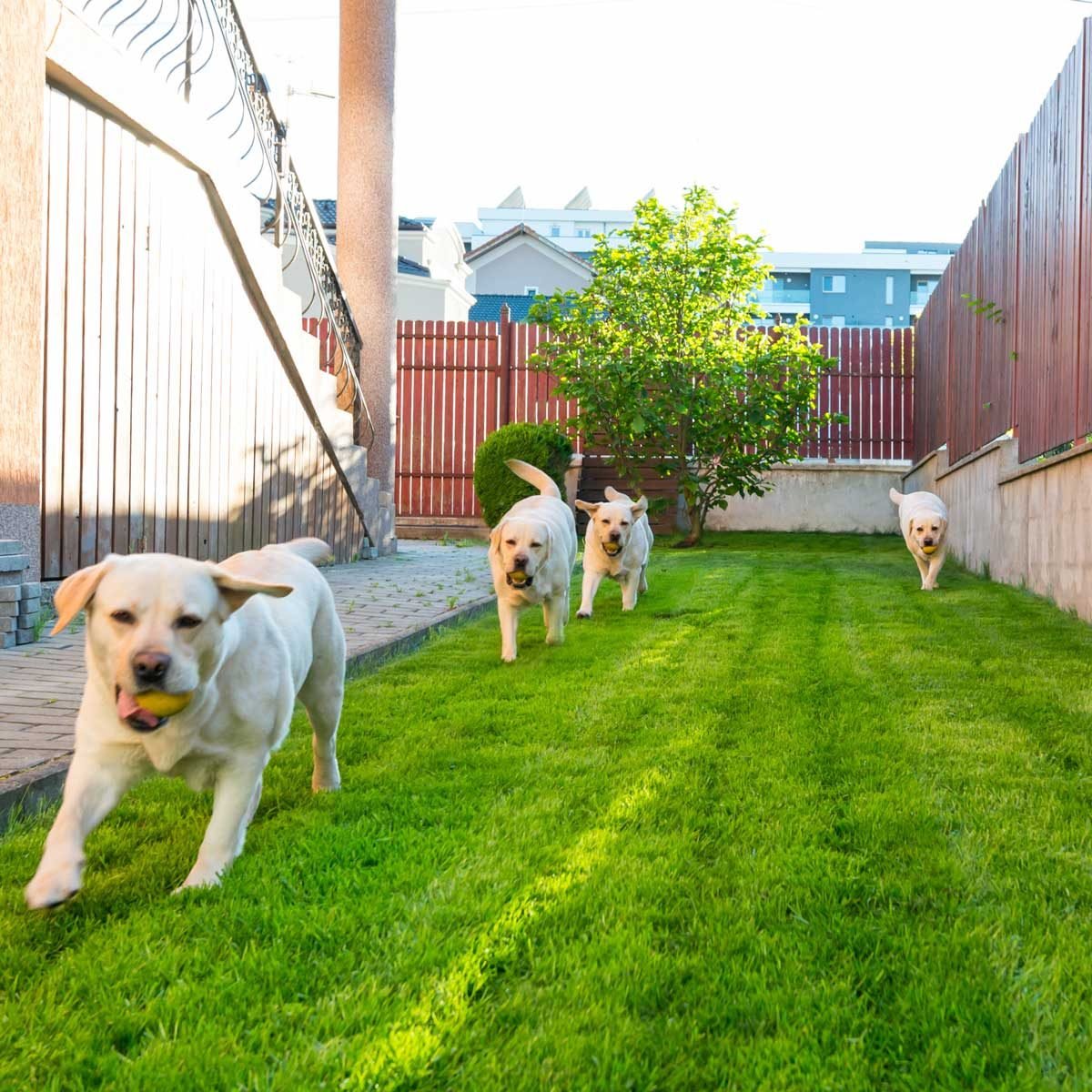Your dog needs a fence for their protection and well-being. Here's an overview of dog fence types and things to consider before choosing a dog fence.

How to Choose the Best Fence for Your Dog

On This Page
A Fence for Fido
If you have a yard and a dog or two (or three or more!), chances are you’re going to need a dog fence. These fences enable your pet to play in a secure space, without risk of running off or getting hit by a car. A dog fence also allows you to open the back door and let your pet do its business, without early morning or late-night dog walks.
Local ordinances likely require you to keep your pet leashed or fenced in, so a dog fence also protects you from code violations and upset neighbors. Build your good boy a dog fence window and let him see the world!
Pros and Cons of Getting a Dog Fence
While we think a dog fence is a big plus for your pet’s safety, here are some pros and cons of getting one.
Pros
- Pet safety. Your dog is secure in its yard and unable to run away, fight with other animals or get hit by a car. Here’s how to keep your dog from jumping the fence.
- Lower risk. Your dog can’t run around the neighborhood, scare or knock down a child or elderly person, or, heaven forbid, bite a person or another animal.
- Pet health. A fenced-in yard provides a secure place for your dog to run, play, lay in the sunshine and do dog stuff.
- Curb appeal. Available in a range of materials and styles, a dog fence can add beauty to your yard.
- Privacy. If backyard privacy is what you seek, a dog fence can do double duty, protecting your pet and you from nosy neighbors.
Cons
- Cost. Even if you go the DIY route, you have to pay for fence materials. Professionally installed fences can cost many thousands of dollars.
- Space. If you have a small yard, fencing off even part of it may seem like you’re cutting up an already small space.
- Permits. You may need a city or county permit to build a fence, and many homeowner’s associations dictate what types of fences are permissible.
- Maintenance. No matter what type of fence you install, it will require some ongoing maintenance.
Types of Dog Fences
Almost any type of property fence can function as a dog fence, depending on the size and nature or your dog.
Chain-link or wire mesh is an inexpensive option, but not the most aesthetically pleasing. Wood-slat or vinyl fences can offer privacy. Metal (iron, aluminum or steel) fences offer maximum durability and a wide range of styles. Wooden picket fences add charm, but may not be suitable for large dogs. Invisible fences are another option you can consider installing, but these do not provide privacy or keep other animals from entering your yard.
Dog Fence Costs and Considerations
Before you install a fence, check local zoning regulations to see if you need a permit and if there are any rules stipulating what type of fence you can build. If you live in a neighborhood with a homeowner’s association, there may be additional rules regarding height, material and easements. If you’re installing the fence yourself, make sure you know where buried utility lines are located before you start digging by visiting call811.com and scheduling a site visit.
Of course, the size of the fenced-in area is one of the biggest factors in determining the cost of your dog fence. Invisible fencing systems start at around $100, but figure on spending more like $300 for a more reliable set-up. Chain-link, wire mesh or picket fencing are among the cheapest options for a dog fence, and are reasonable weekend DIY projects.
Wooden privacy fences can also be installed without professional help, as can vinyl, although vinyl panels cost more than wood. Heavy-duty metal fences usually have to be professionally installed, but can be custom-crafted to your taste and are most resistant to the elements. As a result, they’re also the most expensive option.
Price and durability tend to go hand-in-hand. The more you spend, the longer your fence will last, and with fewer repairs. You also need to decide whether to install the fence yourself or hire a contractor. A contractor will cost a lot more, but remember, the fence has to be built to last. If you’re unsure of your DIY mettle for fence-building, it might be best to leave the job to the pros.
Dog Fence Maintenance and Repair
Strong wind or a downed tree limb are just some of the hazards to your dog fence. Wooden and chain-link fences can be easily repaired without calling in a pro. Skilled DIYers can repair vinyl fencing, as long as they can find vinyl panels to match the existing fence. Metal fences are extremely durable but will require professional repair if damaged.
Wood fences require the most maintenance of any type of dog fence; they need to be re-stained, re-sealed or painted periodically to avoid wood rot and warping. Vinyl fences will do well with periodic cleaning. With mental fences, you’ll want to touch up rust or scratches.




















